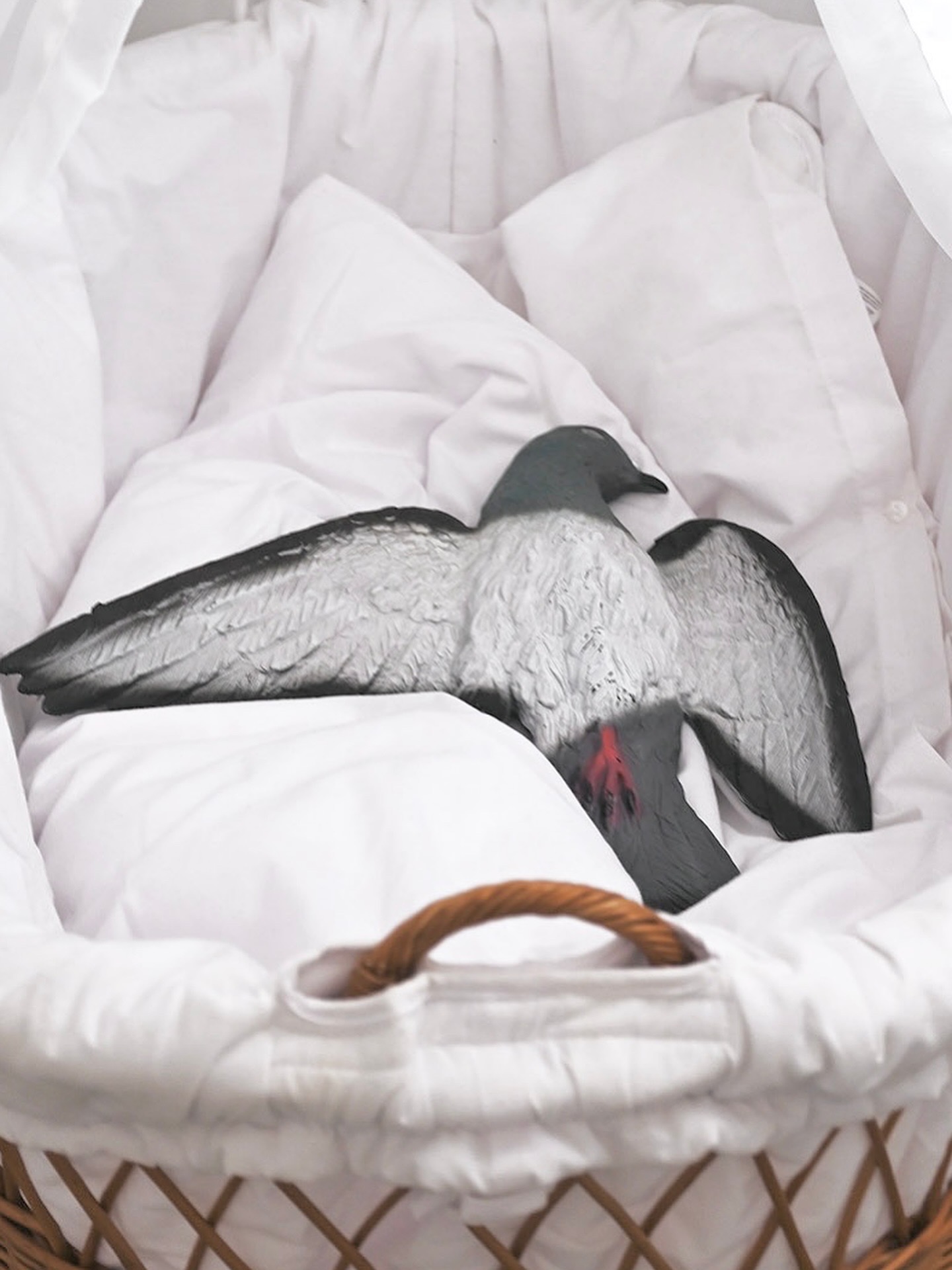
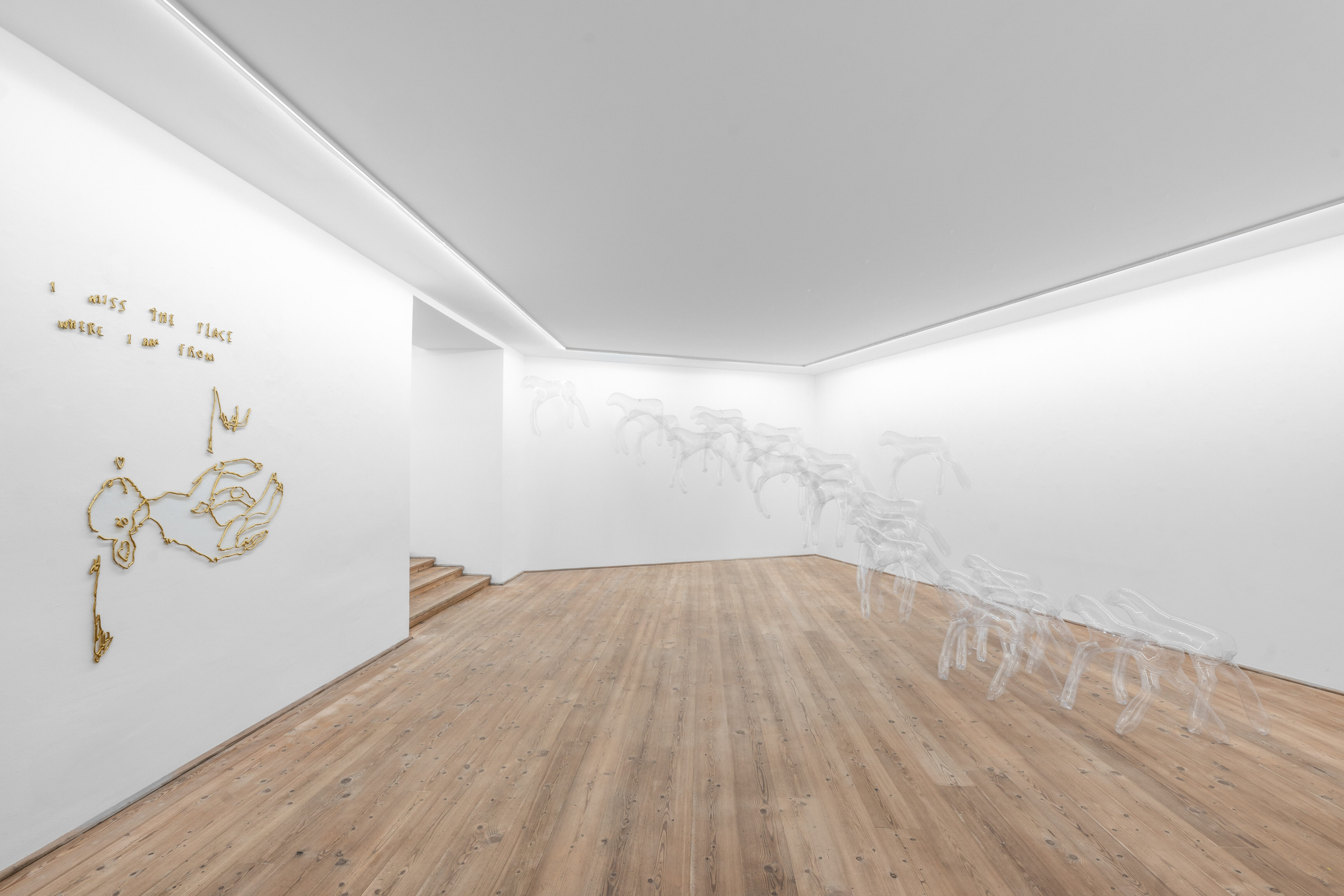
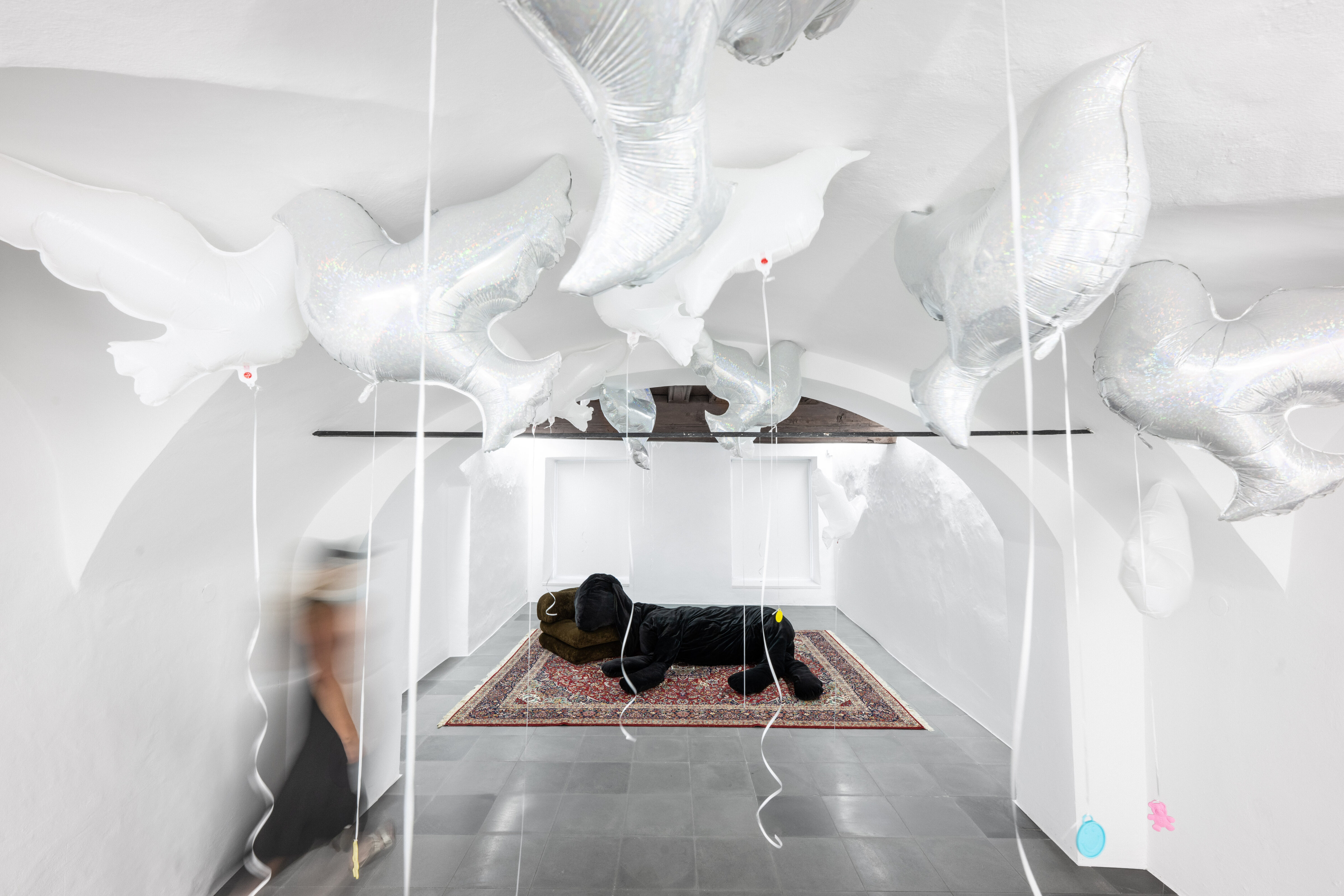
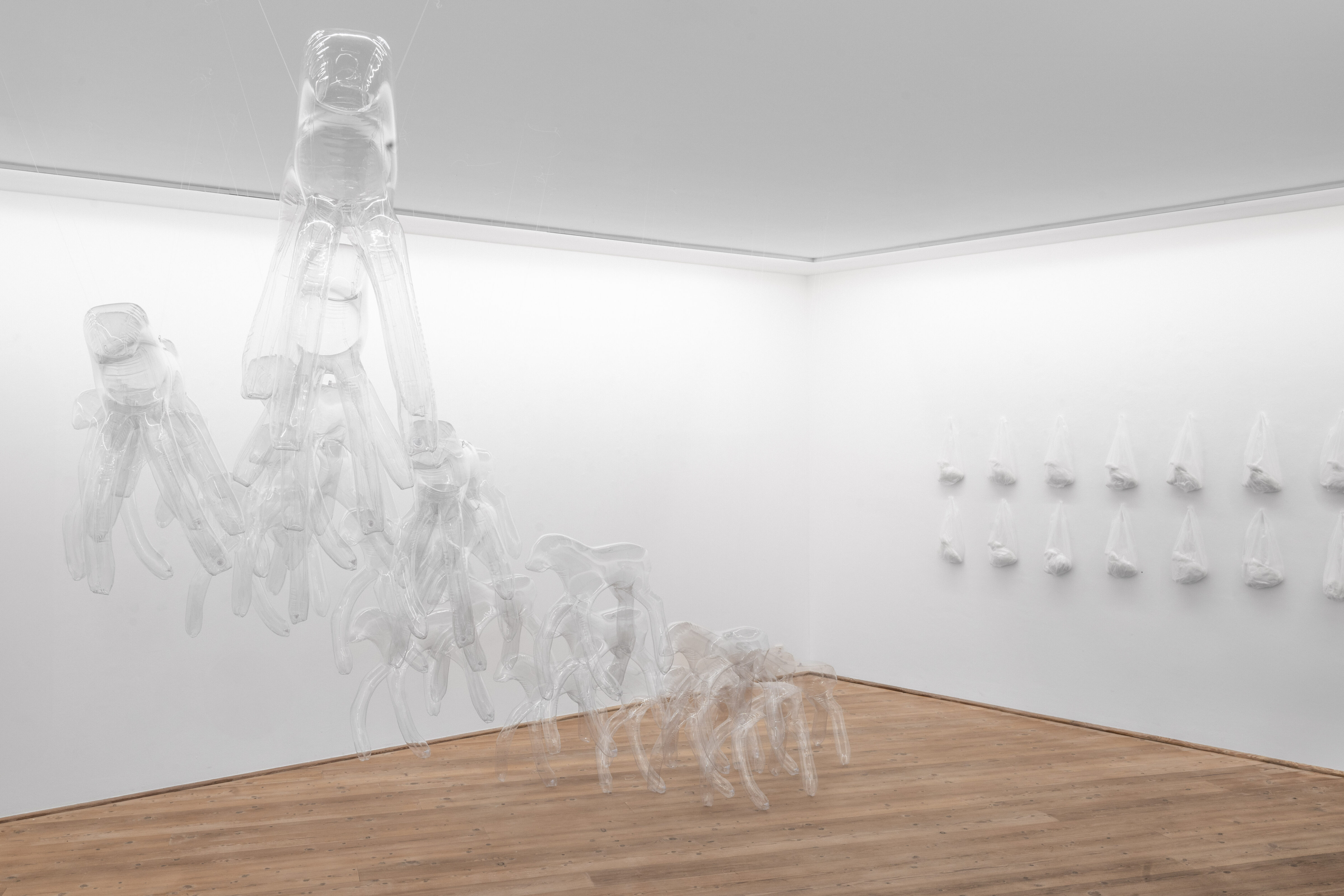
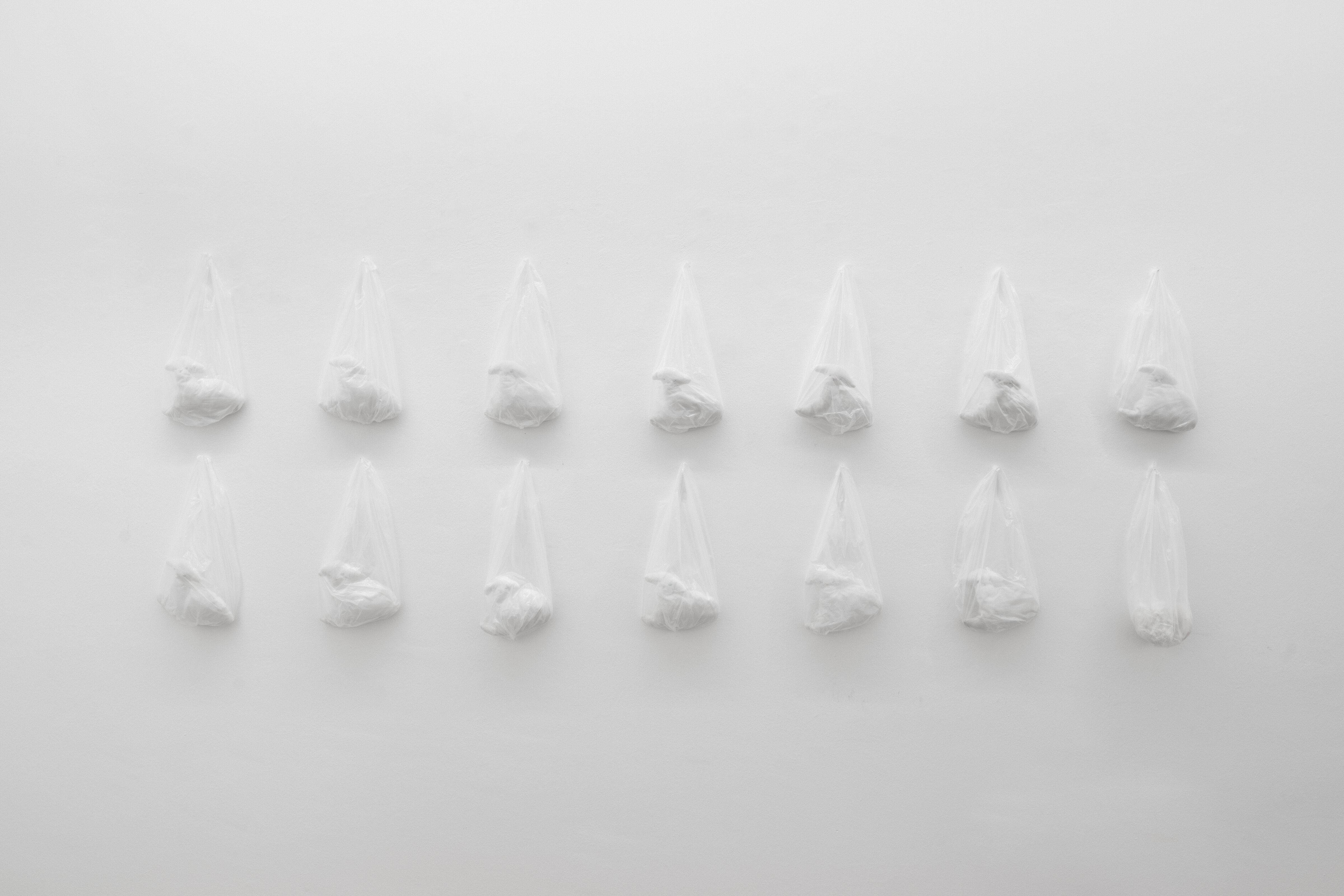
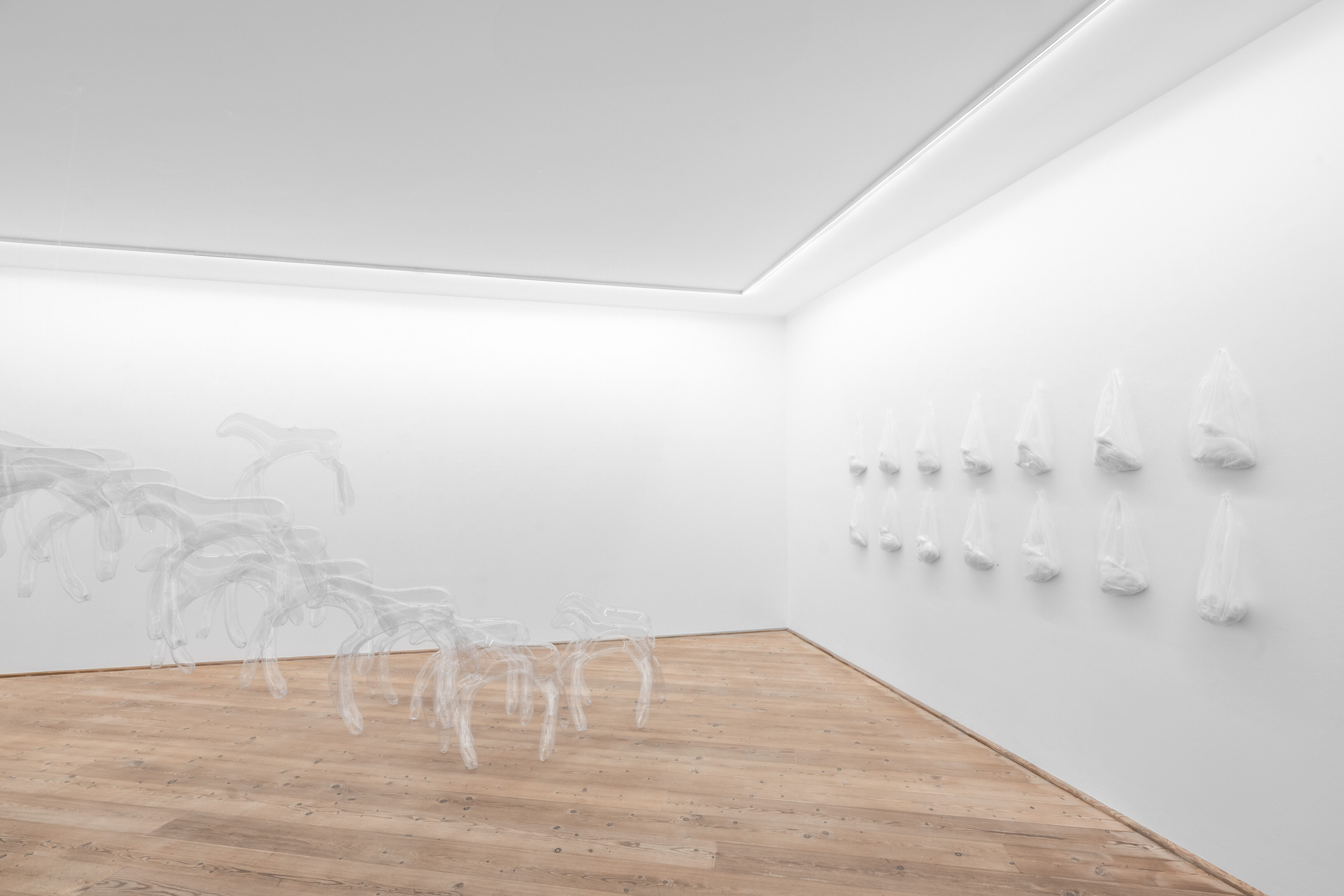
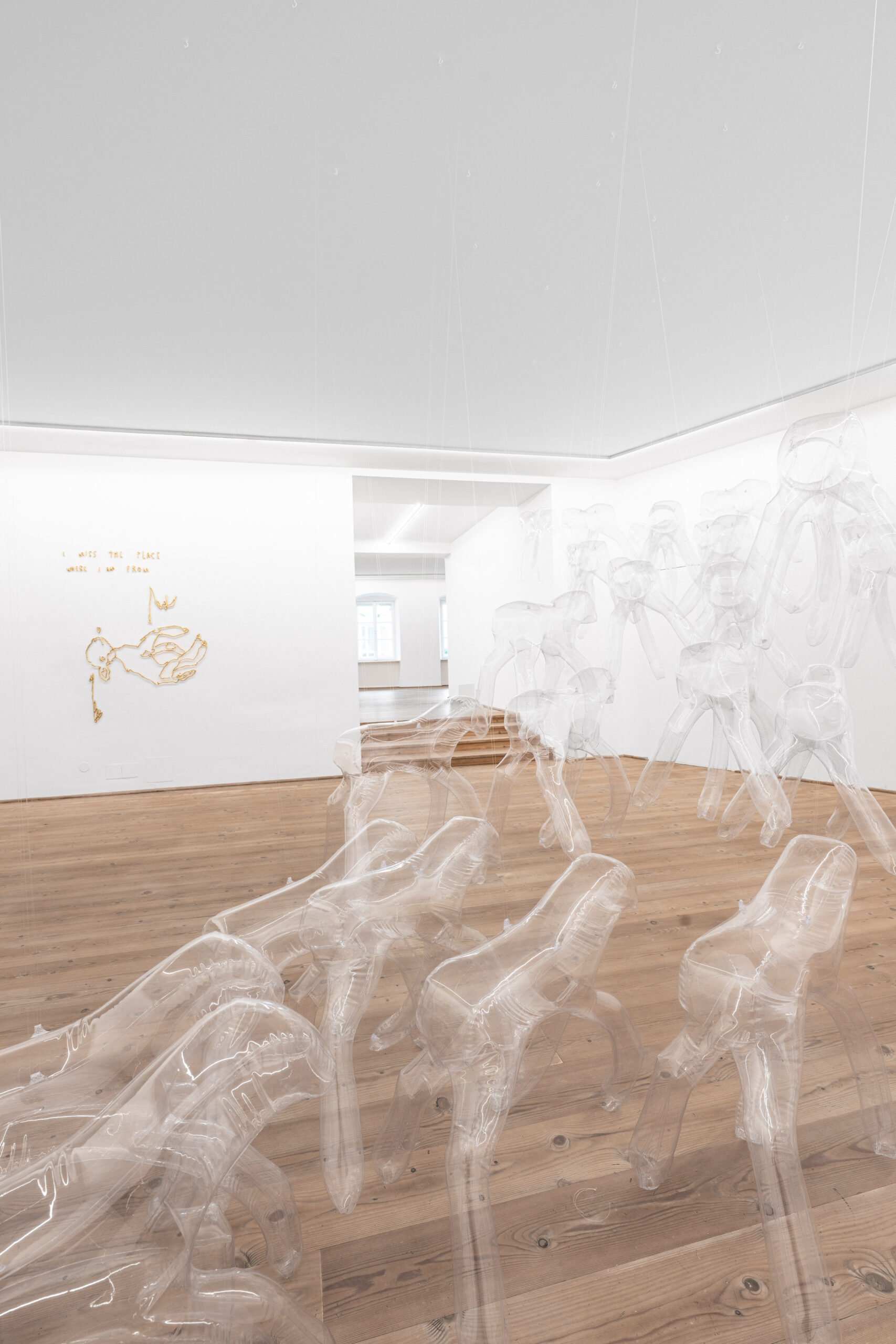
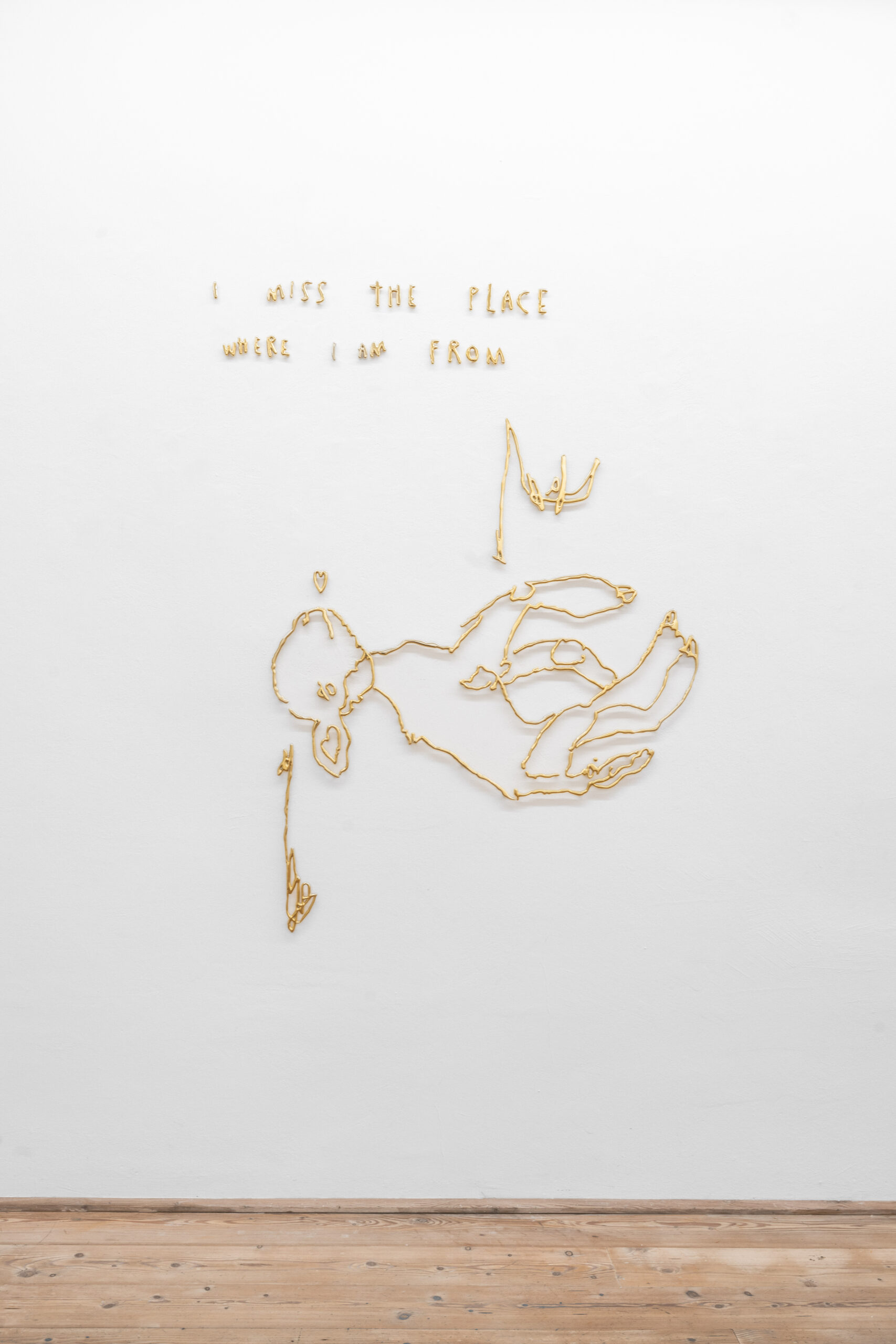
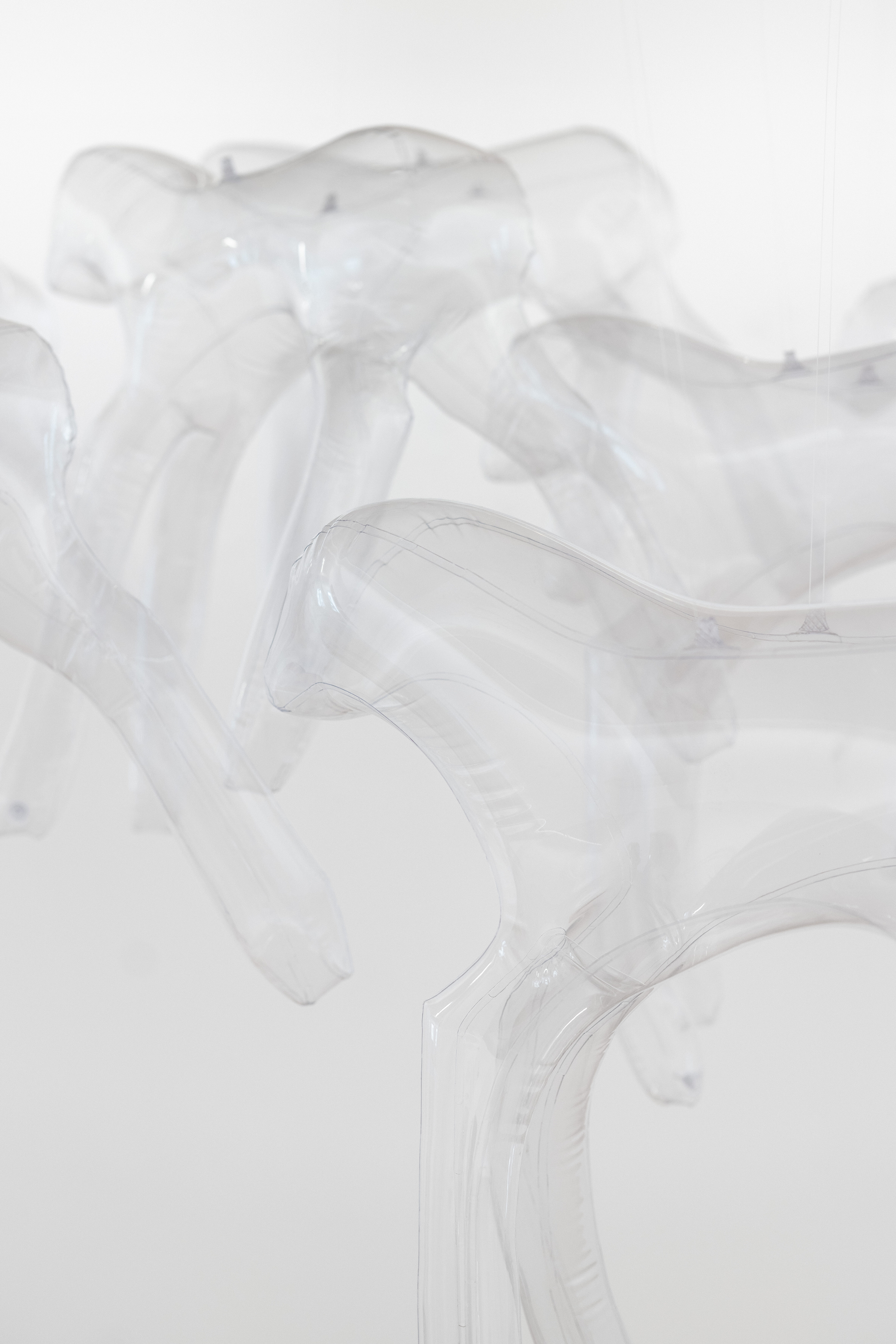
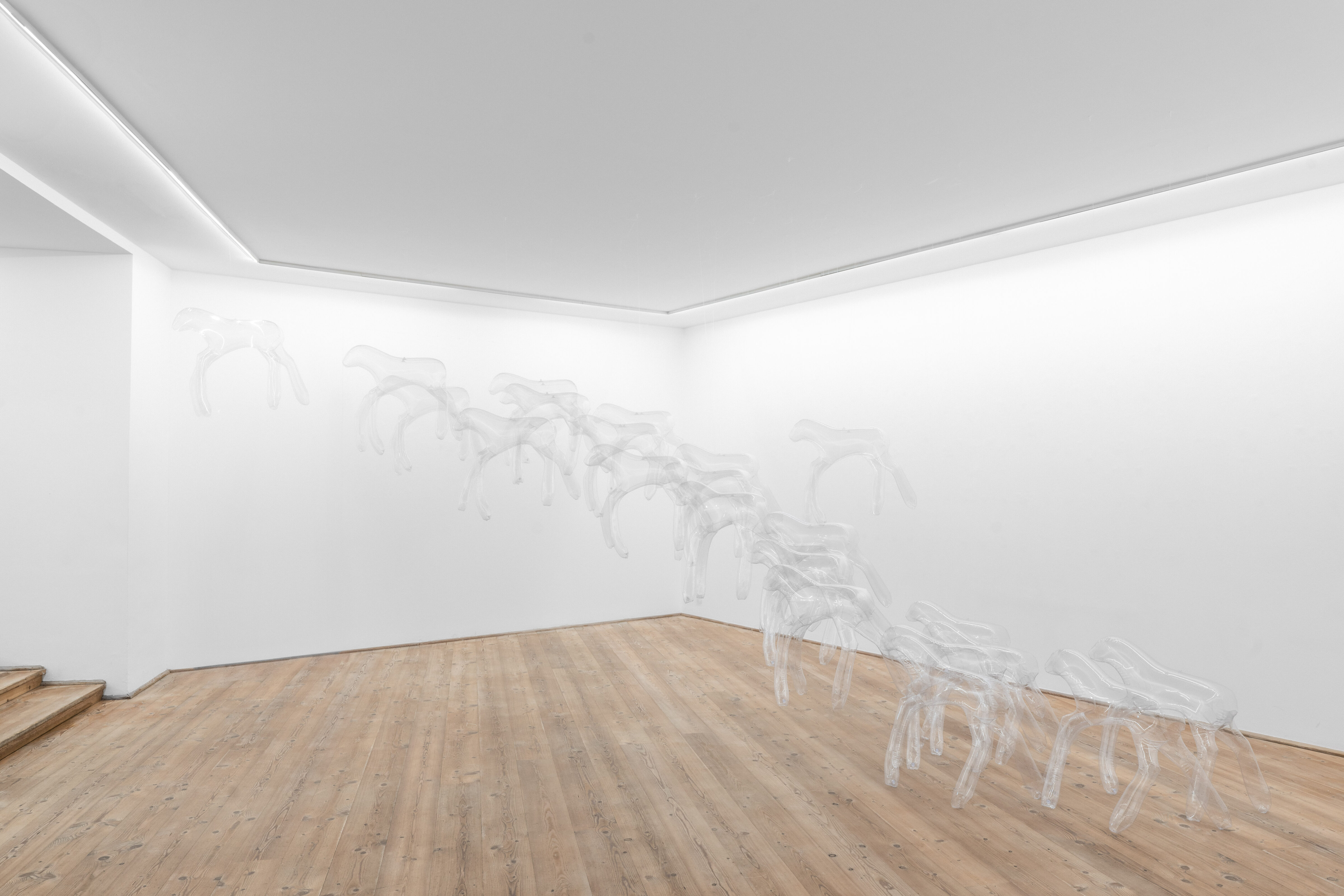
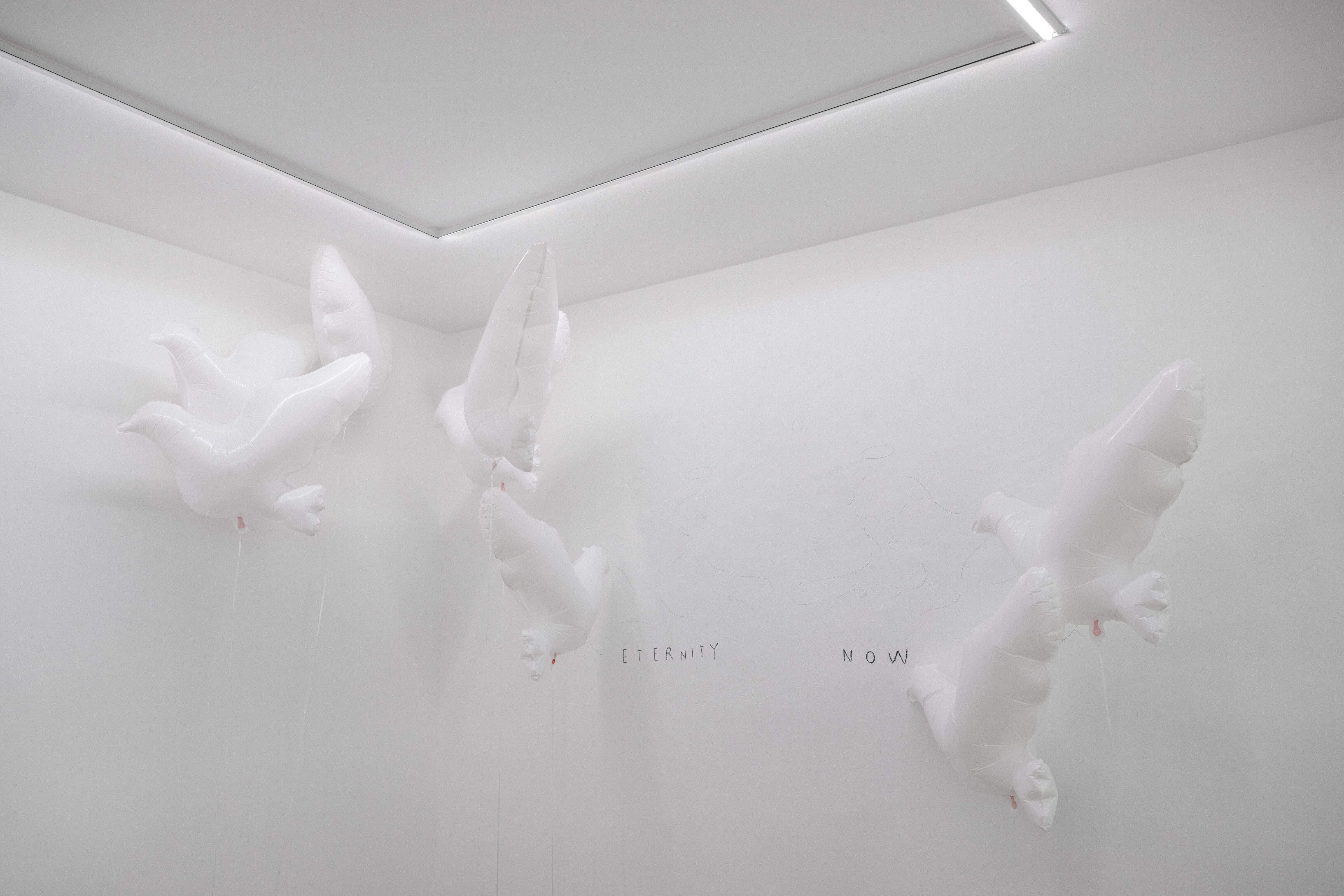
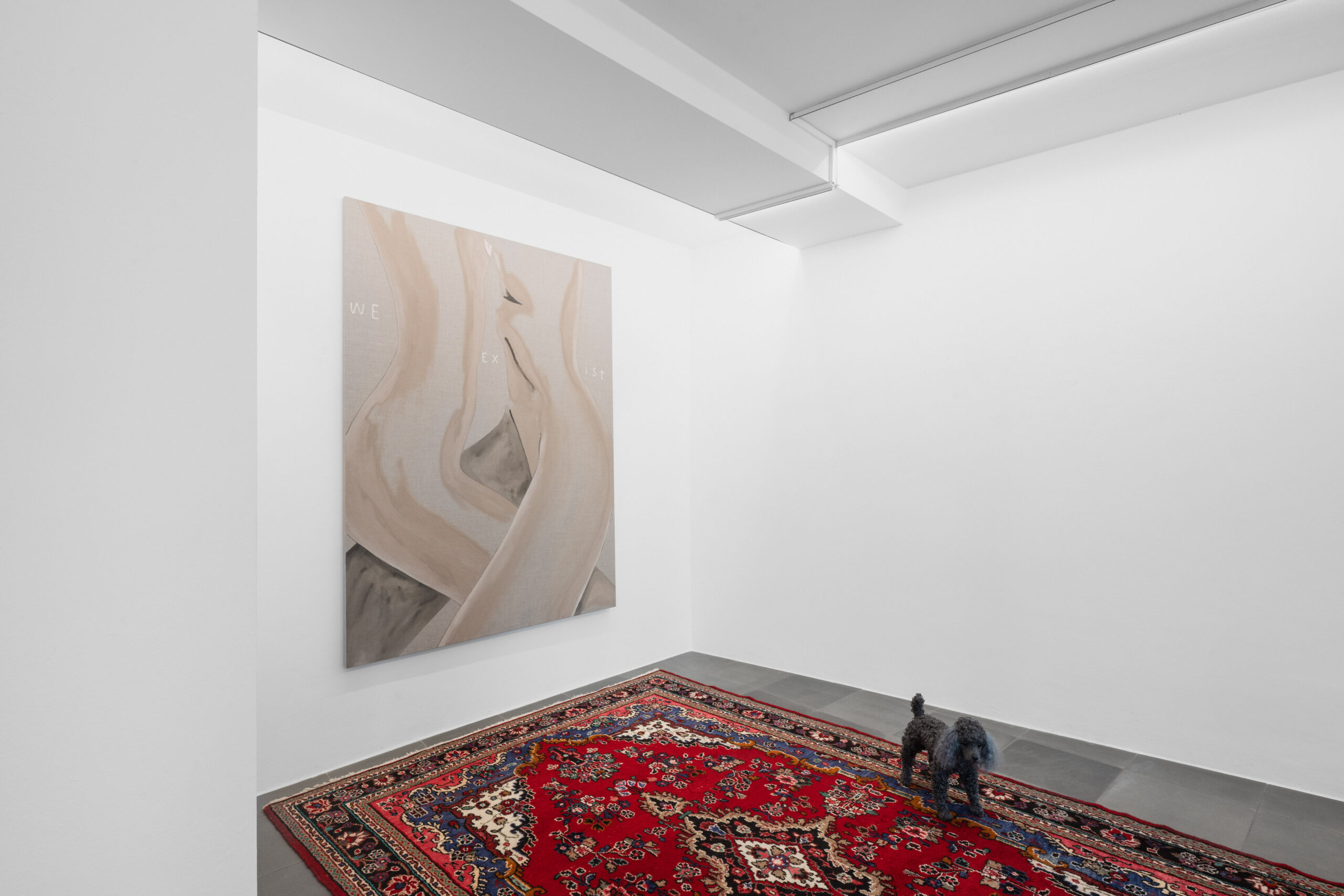
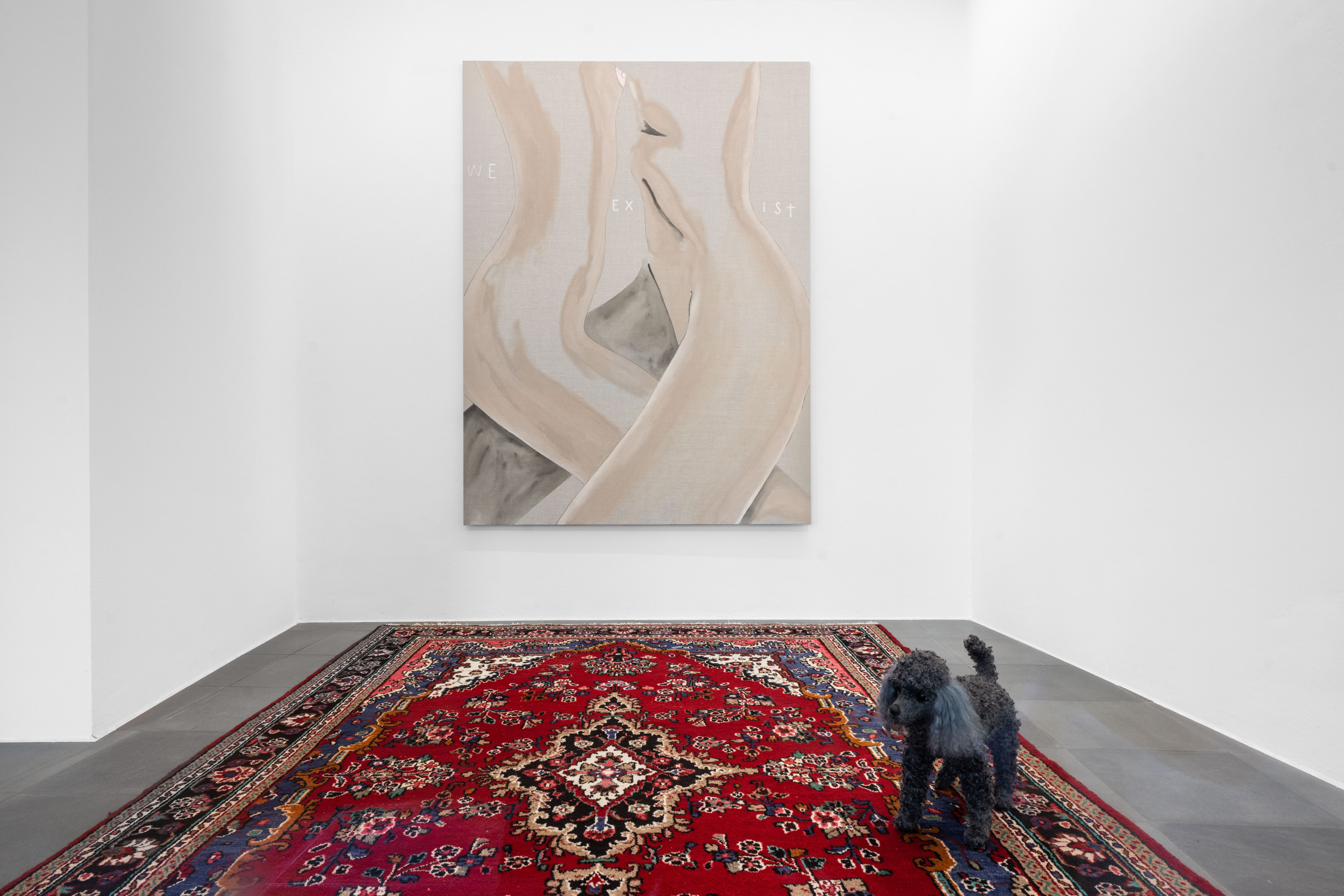
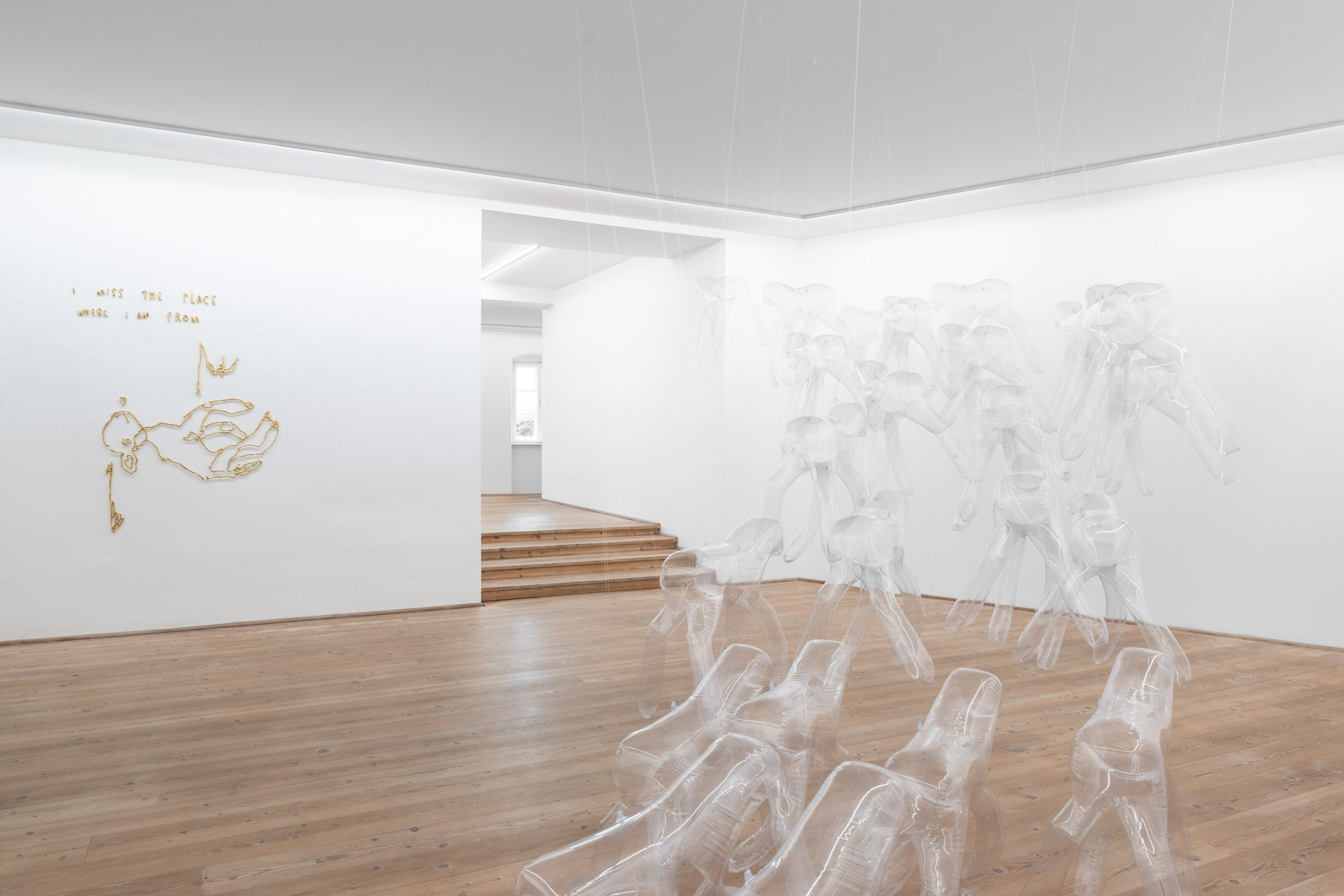
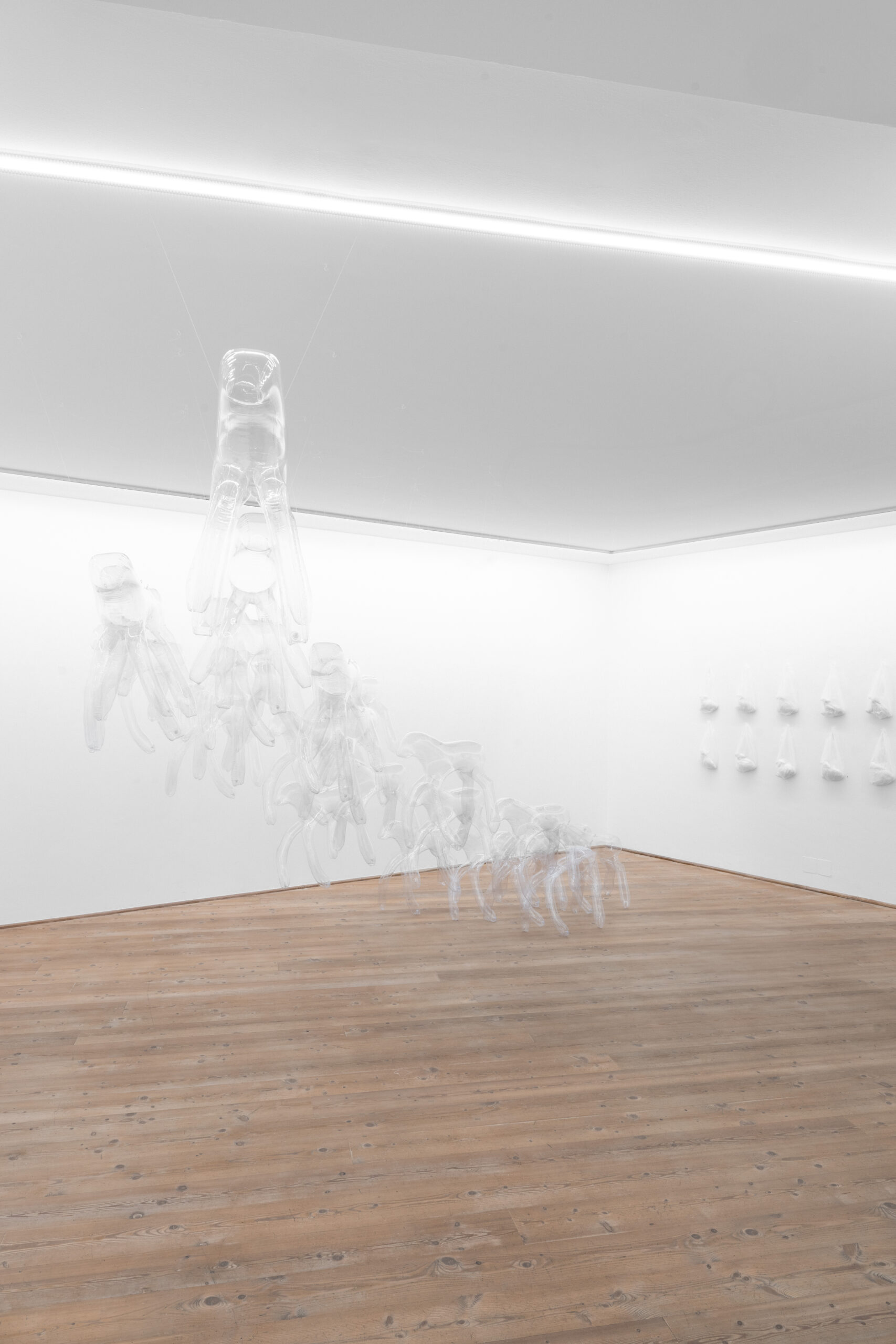
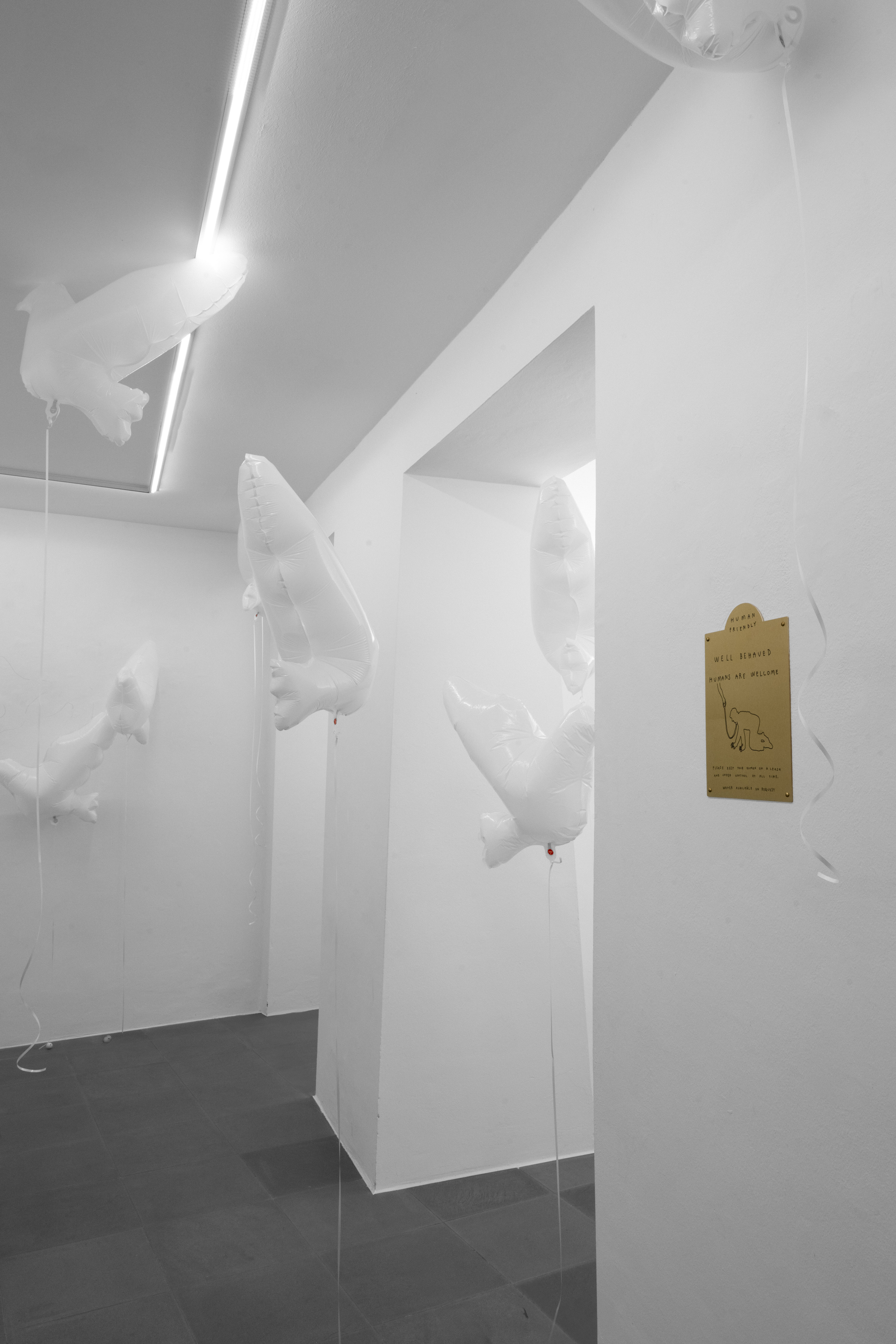
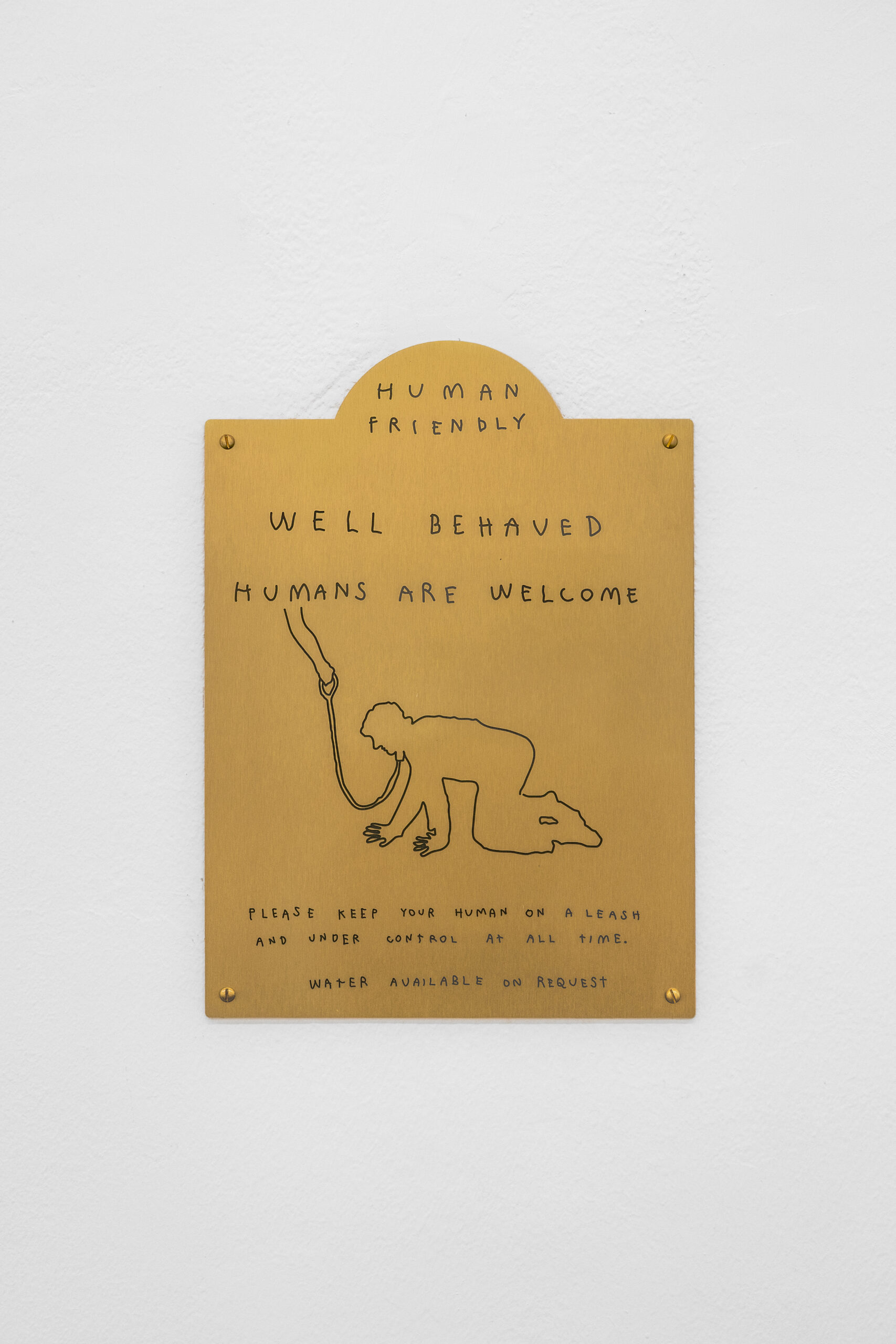
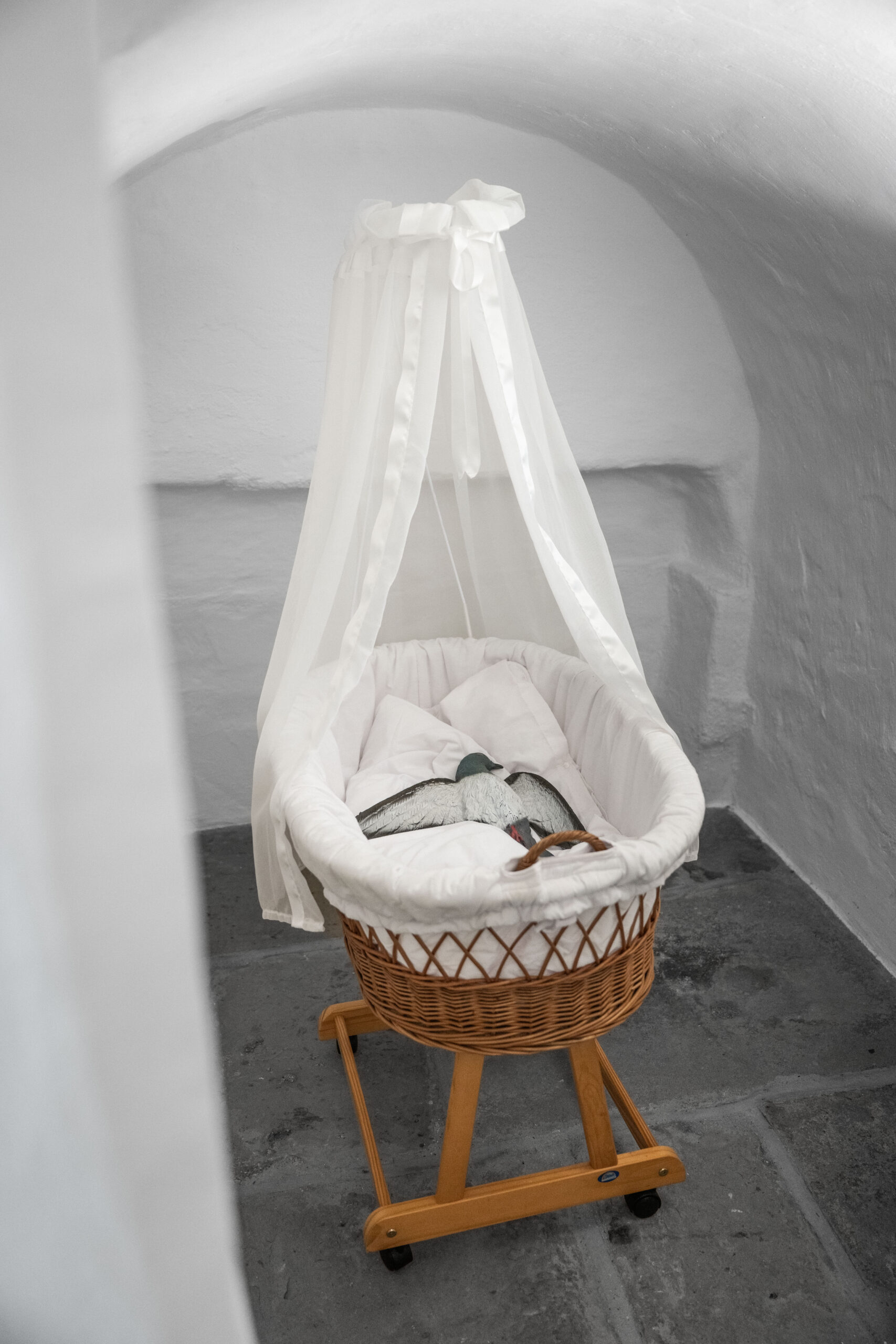
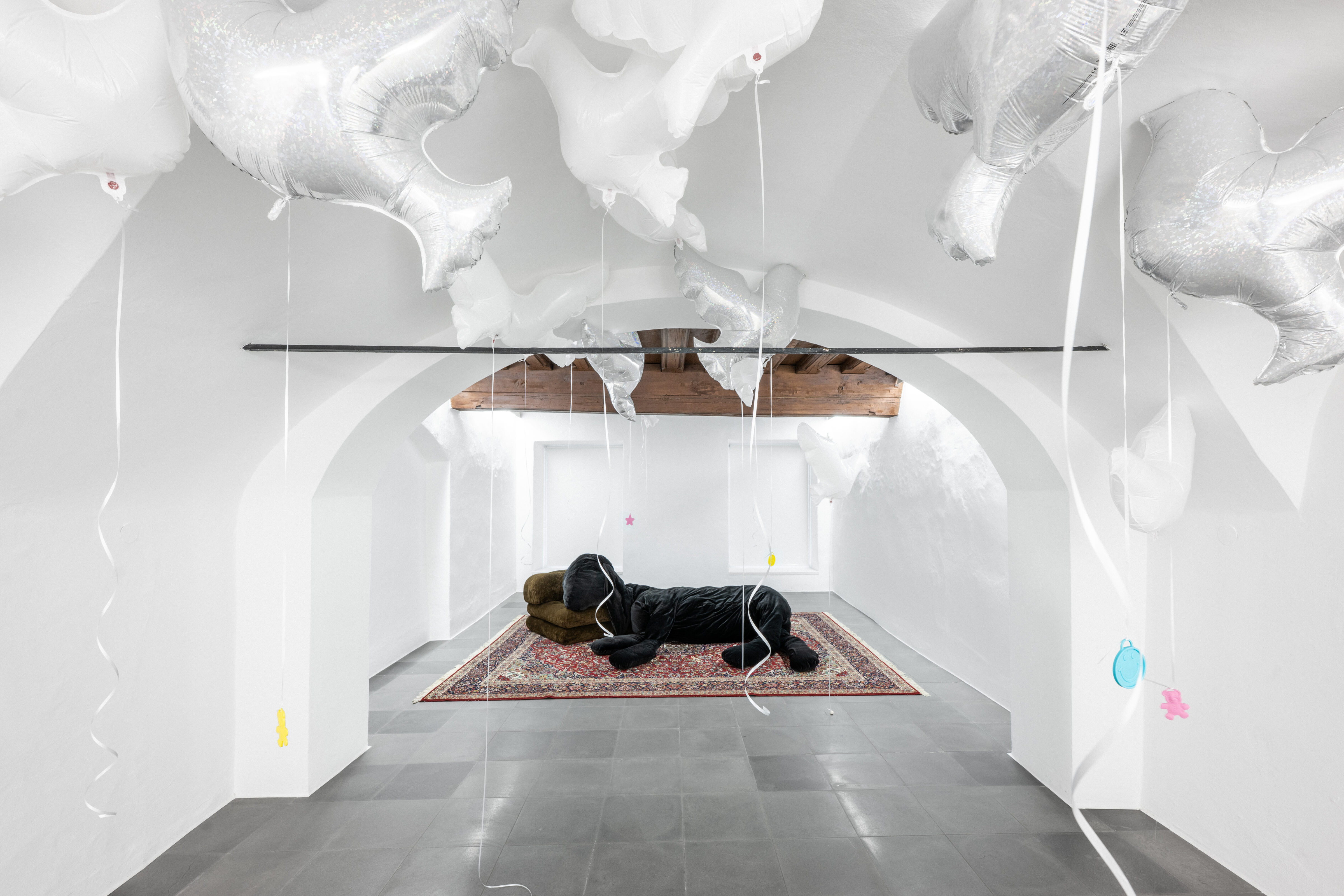
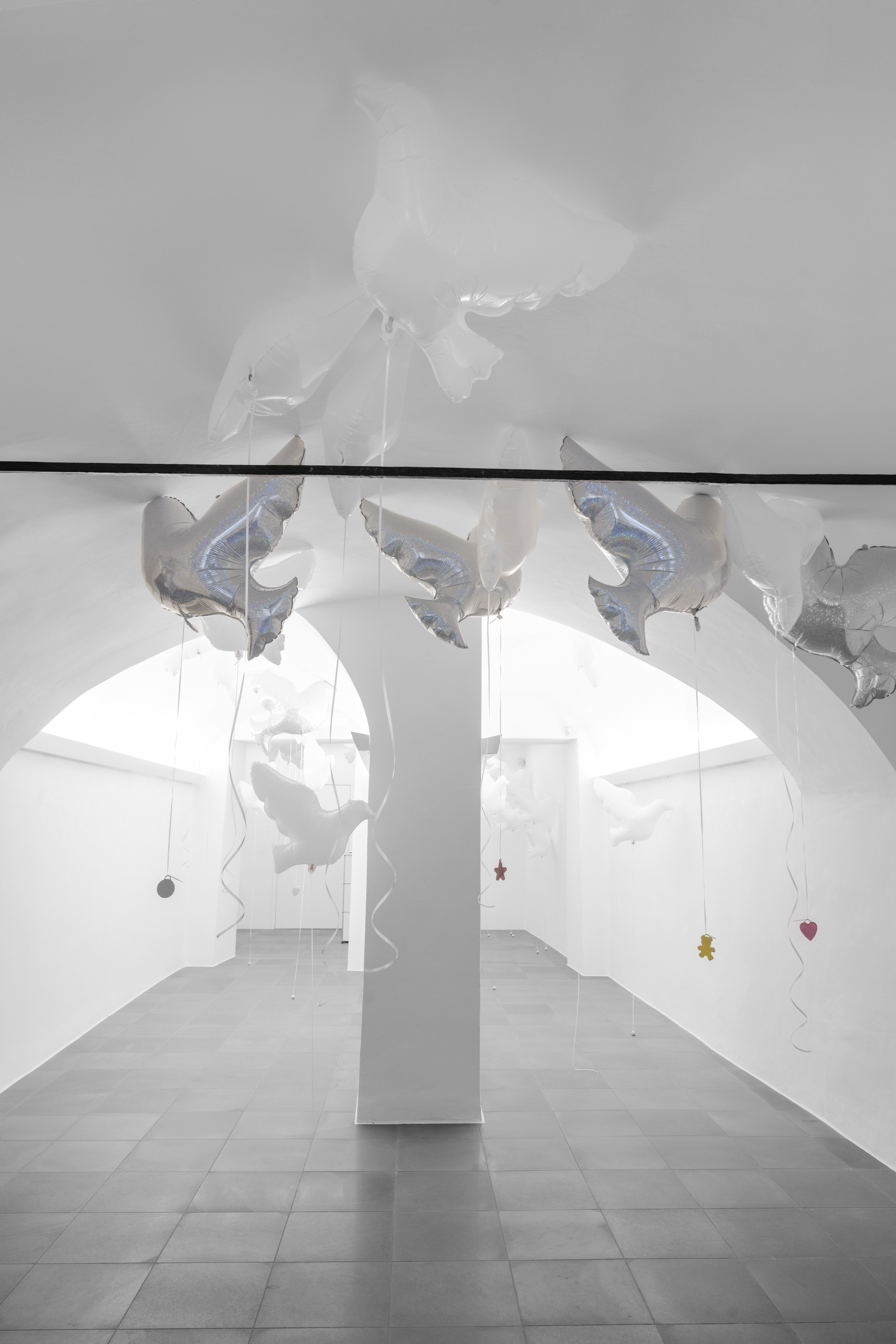
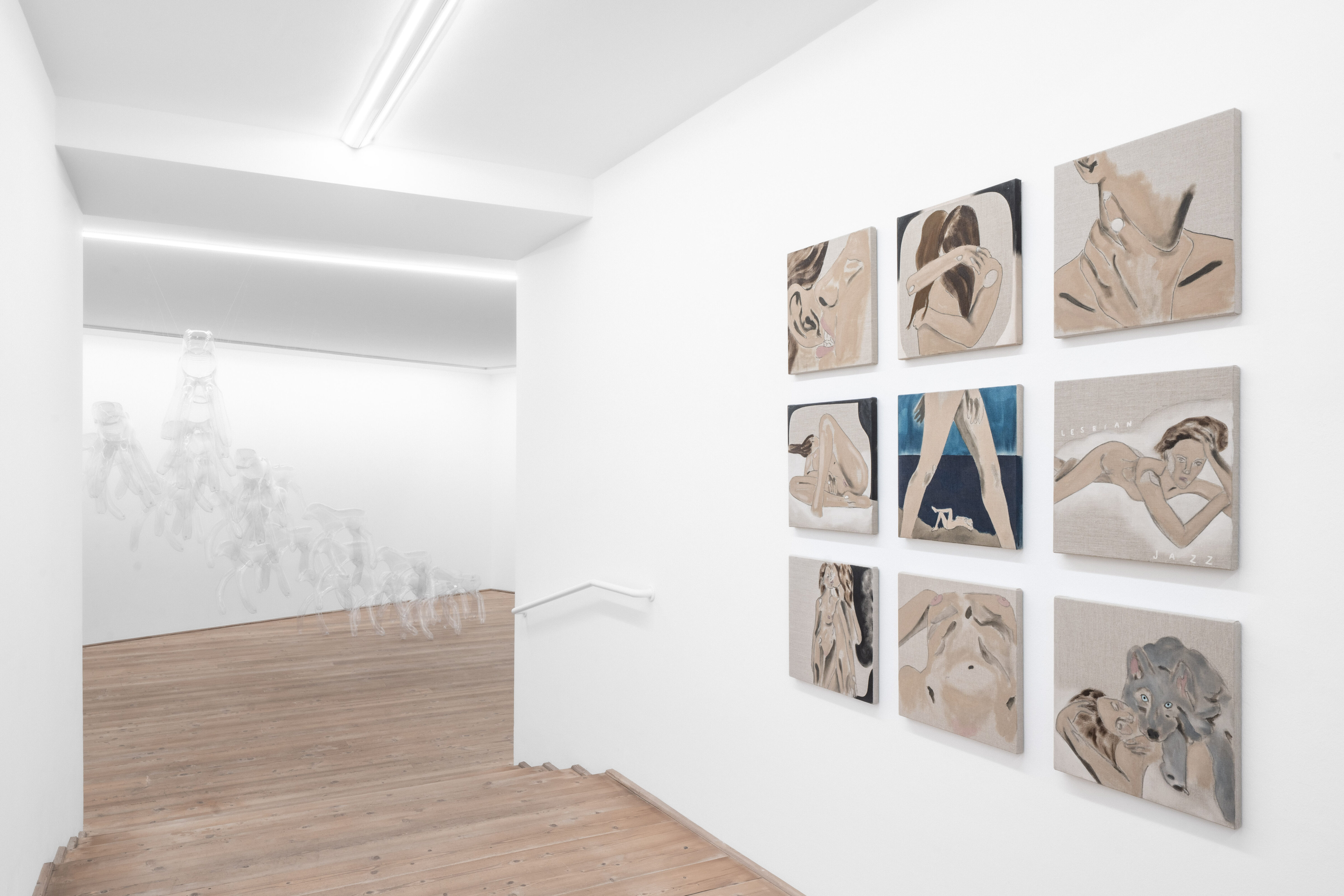
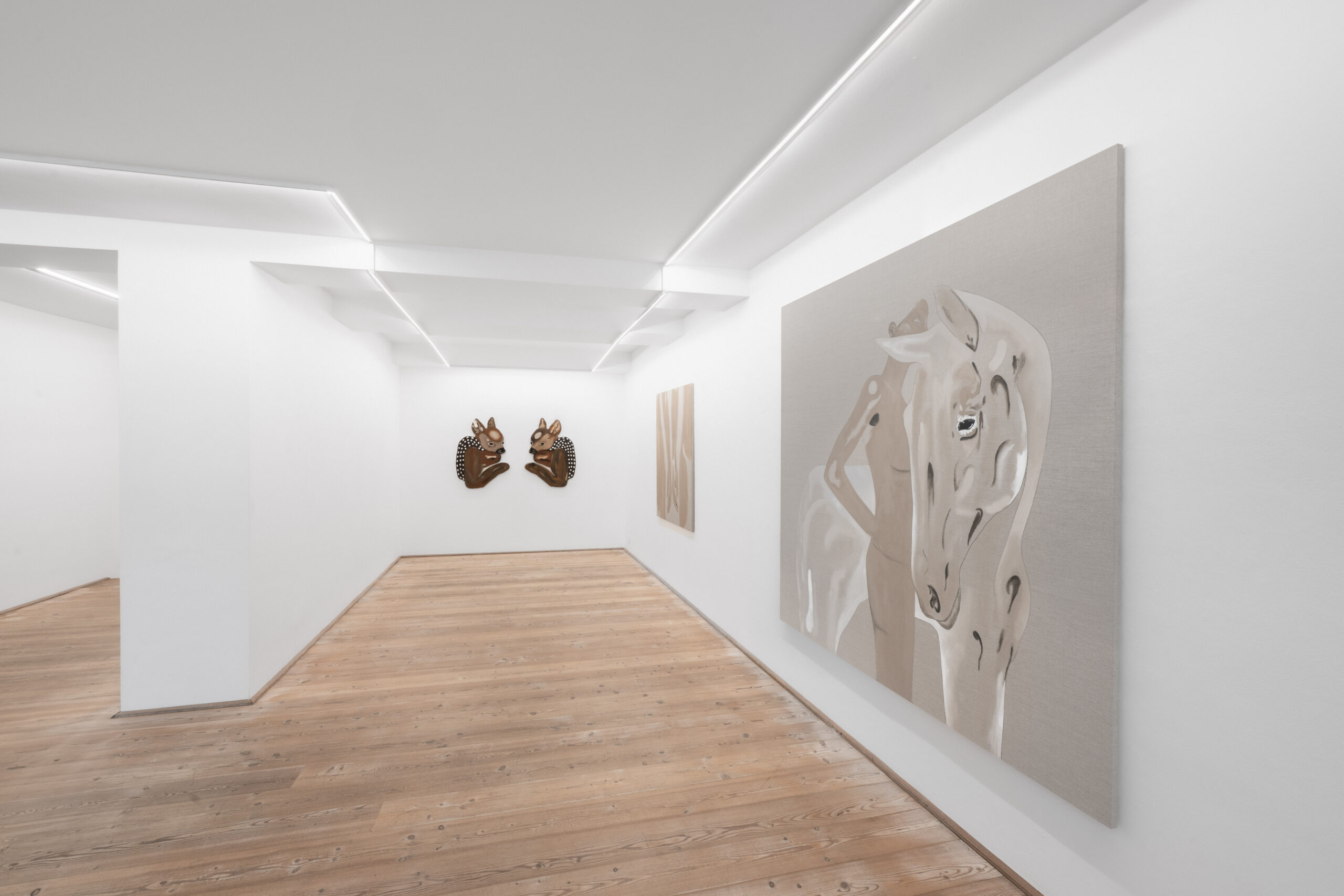
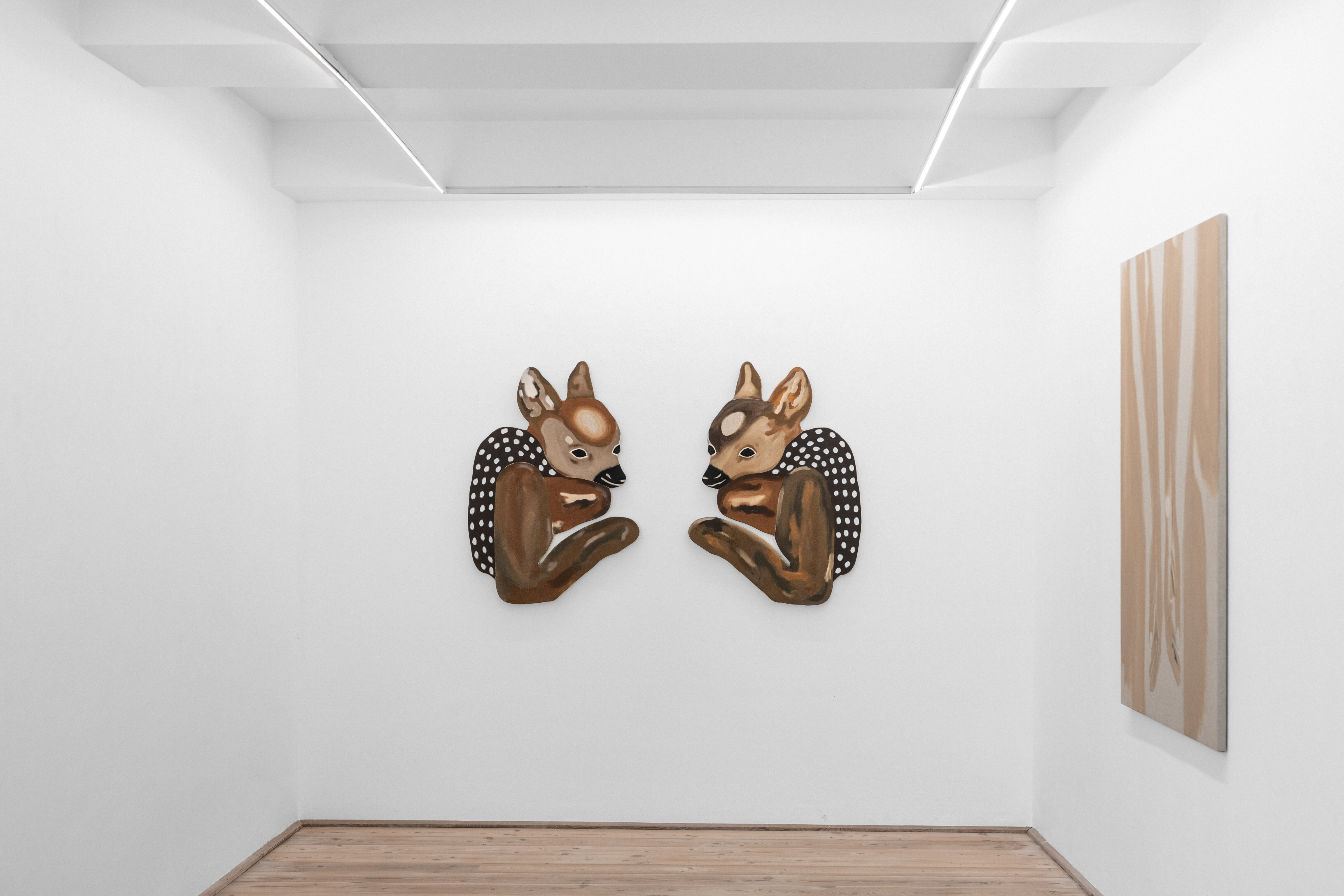
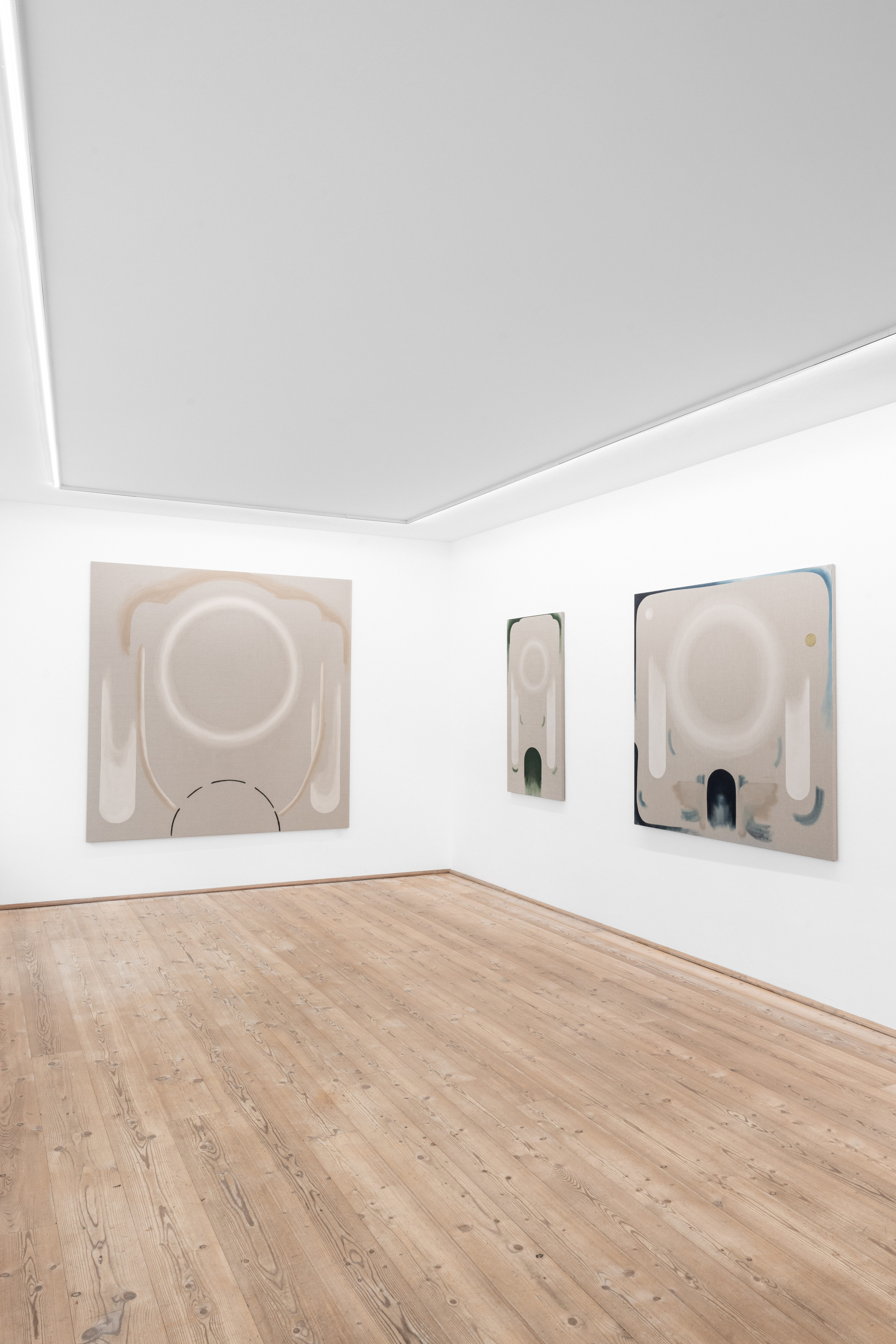
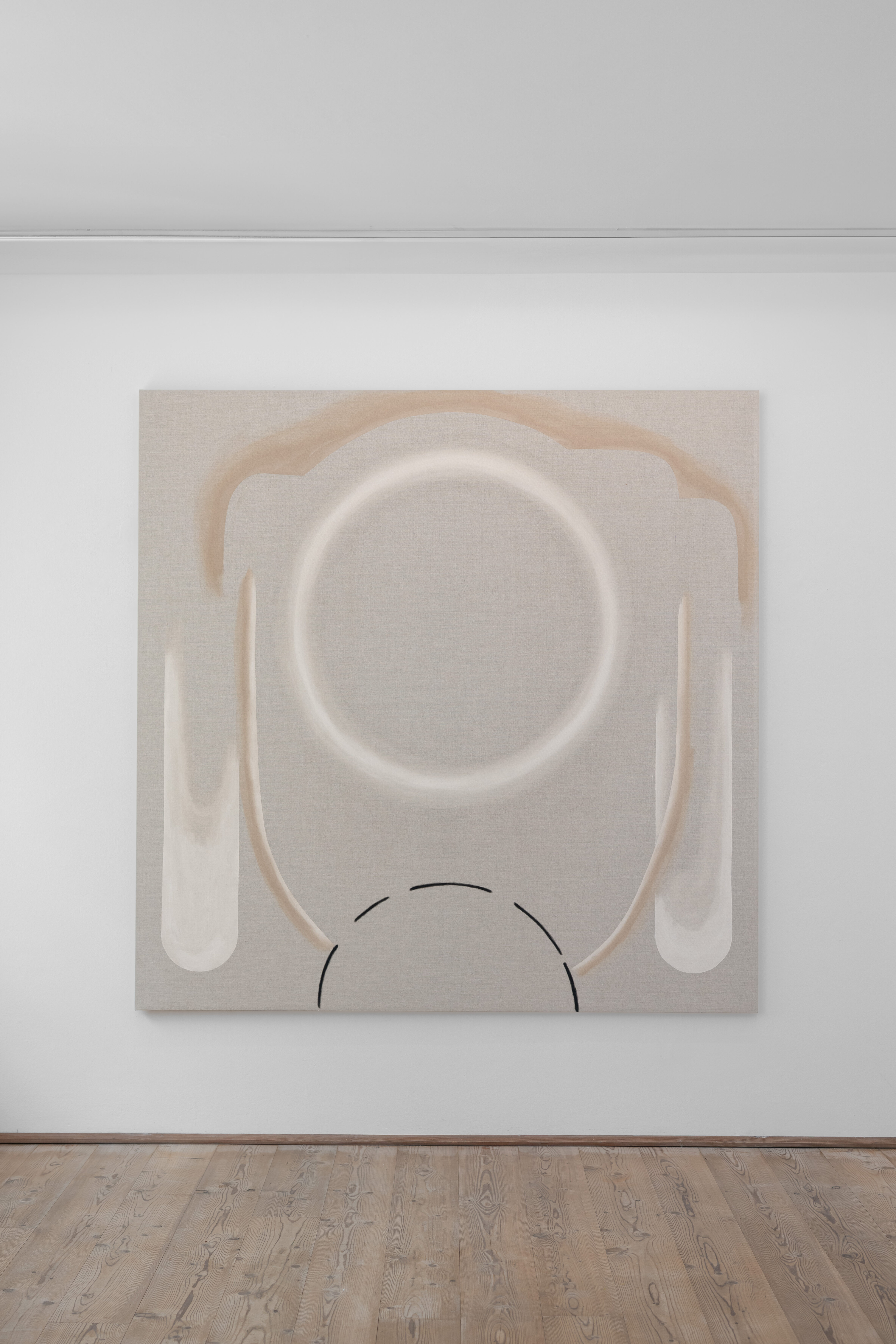
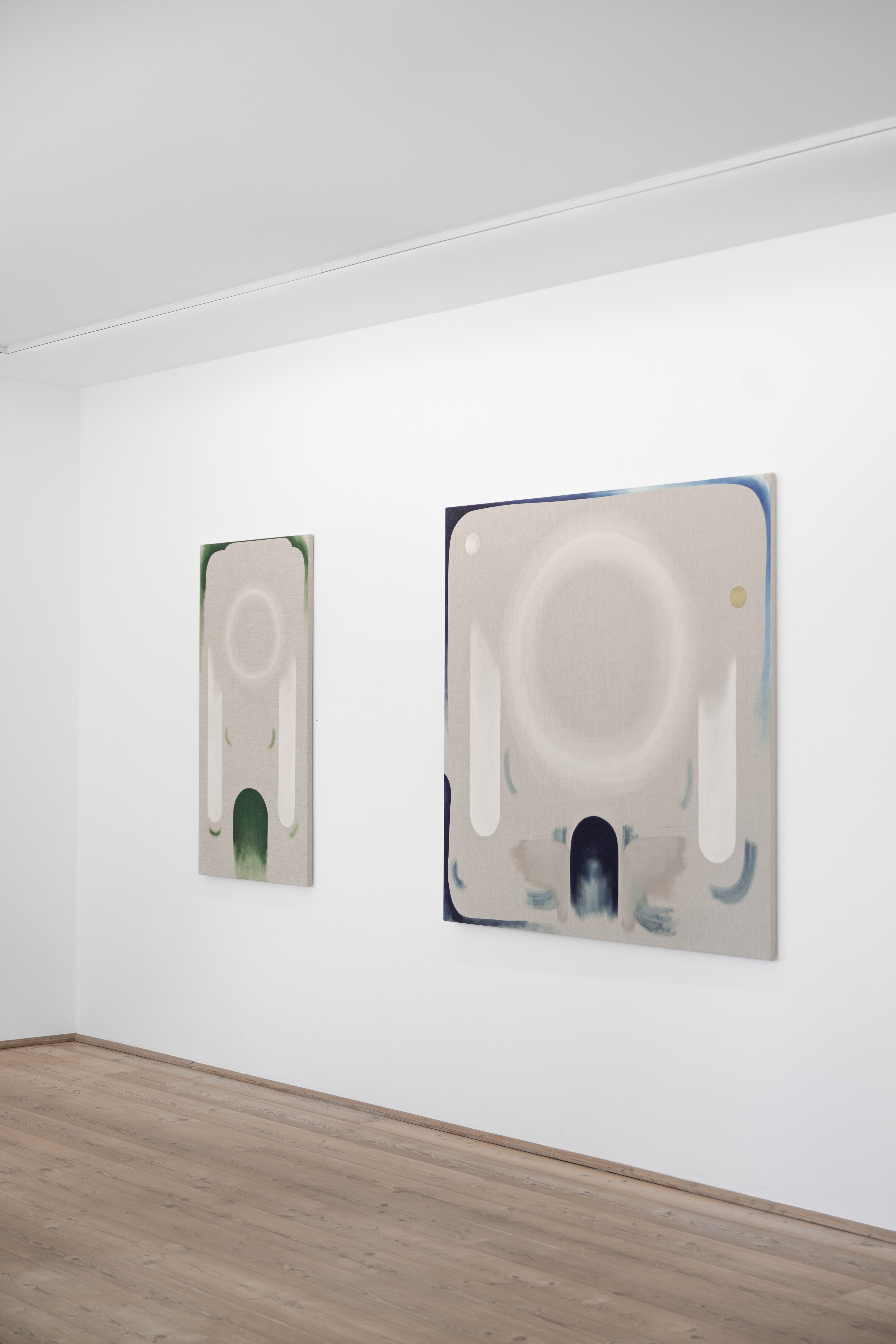
Anouk Lamm Anouk at Galerie 422
FALLING OUT OF WORLDS,
Anouk’s work is rooted in the philosophical stance that no living being stands above another (anti-speciesism), and it advocates for dissolving rigid, ideologically imposed categories. Mutual care between humans and other living beings is central to Anouk’s artistic practice. The exhibition explores connections and interactions between love, companionship, and interconnectedness, sketching out a world where dividing lines begin to dissolve—perhaps even revealing the end of the Anthropocene.
Spread across two floors, visitors are offered a broad insight into the internationally recognized artist’s oeuvre, which spans painting, installation, sculpture, and text. Anouk frequently returns to specific motifs, beings, and rhythms, weaving them into a unique, holistic cosmos.
Embedded within Anouk’s calm visual language is a consistently tender and humorous gaze on major issues of our time—humanity’s relationship with nature and animals, and the visibility and place of queer* individuals and people with disabilities in society. The works invite viewers to pause and live in the moment.
INSTALLATION & SCULPTURE
Spread across both floors, several installations and sculptural objects form an integral part of the exhibition. One is a cradle embedded in a grotto: the first work in the new series titled GOD’S FAVOURITE.
Inside the cradle lies a dove, wrapped in white bed linens. As the first bird domesticated by humans—even before chickens and geese—the dove was a companion and helper (e.g. carrier pigeons). Today, however, they are often driven out of cities and referred to as “rats with wings.” Still, the dove remains a potent symbol of peace and love. In GOD’S FAVOURITE, the dove is once again entrusted to human care and finds comfort and protection in the cradle—something denied to it for too long. The work’s title references Christian iconography, where the dove represents the Holy Spirit. In both title and execution, the work reveals the ambivalence surrounding how other species oscillate between worship and rejection. It poses the question: who is friend, who is foe? Who is pet, who is livestock? These categorizations appear ever-changing and impermanent.
Socio-cultural structures and traditional hierarchies are also questioned in The Herd N°2, a sculptural installation of transparent sky-horses. In Greek mythology, the sky-horses pull the chariot of the god Helios, symbolizing the sun’s passage from east to west, from dawn to dusk—a metaphor for transience. These mythological beings are both present and absent. Their translucent materiality and minimal figurativeness represent their absence in our physical world and their presence in our imagination, myths, and stories.
The horse herd also serves Anouk as a symbol of matriarchy. Unlike most human societies, horse herds are matriarchal—led by an experienced mare whose authority stems from inner calm. This contrasts with human concepts of leadership, often rooted in action, dominance, and superficial associations with masculinity.
Resting peacefully nearby lies an oversized lamb, its head on an armchair. In The Lamb That Falls From the Worlds and in the 2023 Venice installation Humans Welcome N°1 (with dog sculptures and carpet landscapes), animal figures reclaim gallery spaces and turn the world upside down—animals take up space and welcome humans into it. The carpets aim to convey comfort and a sense of home—concepts that are not always granted to queer individuals or minorities, but which are worth fighting for in a pluralistic society.
Another installation, 13 Lambs, is a long-term series that Anouk has been developing for ten years and is shown publicly for the first time. It is Anouk’s first series dealing centrally with anti-speciesism. Fourteen plastic bags hang in two rows on nails. Thirteen of them contain a lamb; the fourteenth contains production waste. From a distance, the lambs appear sterile and identical—like packaged meat in a supermarket. Up close, however, each reveals its individuality: different faces, personalities, and needs. The sweetness of the lambs is disrupted by the aesthetic of industrial production.
Also part of the exhibition is a brass wall sculpture from the series I miss the Place where I am from. Related to the black, oversized lamb “falling from the worlds,” this brass lamb appears to fall—or perhaps float—between two realms. Anouk first developed this motif at age 20 and felt a connection to it long before understanding why. Later, receiving an autism diagnosis in their twenties gave the work new depth. Many autistic individuals describe a sense of “Wrong Planet Syndrome”—feeling as if they were born on the wrong planet. The motif now resonates even more deeply.
PAINTING
Anouk Lamm Anouk also creates space for queer individuals through painting. In the series Lesbian Jazz, figuration (lesbian visibility on canvas) and abstraction (the translation of jazz music into abstract painting) are brought together. The bodies Anouk draws and paints are predominantly female—sometimes genderless or androgynous. Faces or facial features are rarely included and are often deliberately left out, creating space for viewers to adopt a lesbian, queer perspective or even see themselves reflected in the work.
In several series, such as Human/Horse or Human/Hound, animals become subjects in the paintings. Symbolically, they function as mirrors and companions in a world still shaped by social marginalization. From a young age, animals offered Anouk a sense of grounding; they were beings she understood effortlessly and who, to this day, evoke a deep feeling of comfort and safety in her.
Safety, stillness, and the intention to live in the present moment are recurring elements in Anouk’s work—and in her daily life. In the purely abstract series post/pre, abstracted ornamental forms are accompanied by recurring circles, glows, and fog-like elements that draw the viewer’s gaze toward the center of the paintings. In post/pre, Anouk explores emptiness as the foundation of fullness, referencing Zen Buddhist philosophy, which teaches that nothingness is everything. Emptiness as the basis for abundance and the richness of being. Emptiness as the ultimate “non-space” preserved on canvas.
These so-called “non-spaces” function for Anouk as portals to another world—spaces intended to help viewers momentarily forget the digital realm and its distractions, all that has been, and all that is yet to come, in order to fully arrive in the here and now.
post/pre literally translates to “before/after,” with the slash “/” symbolizing the fleeting moment we are in—the present instant that constitutes life itself.
Photos by Karin Hackl